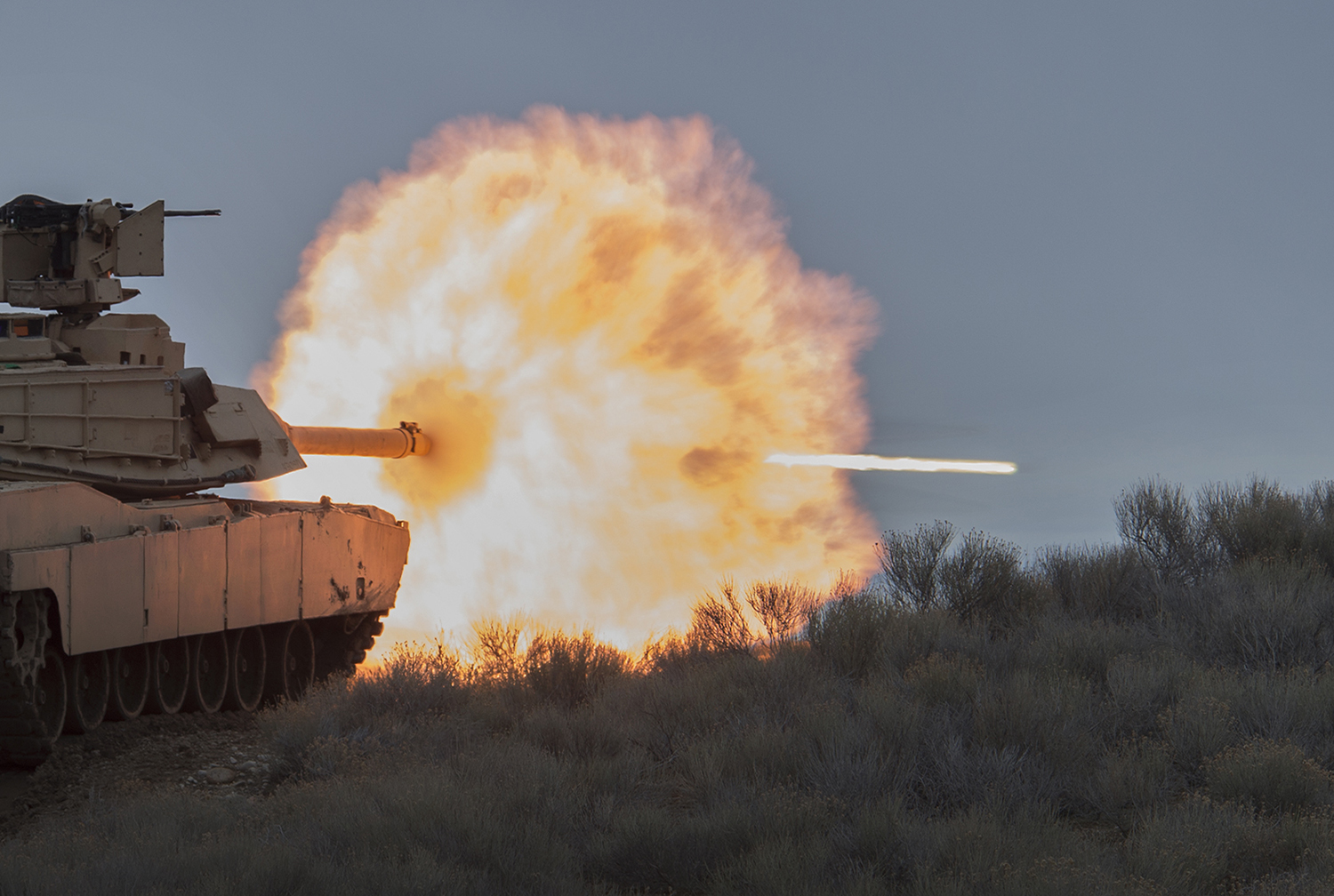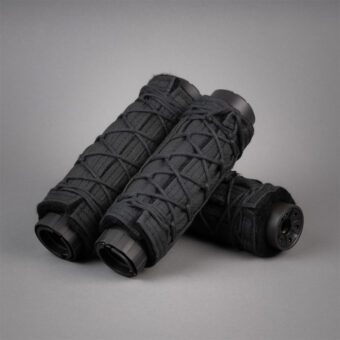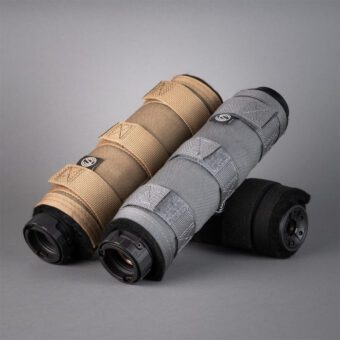Home / Silencer & Gun News / Arsenal Blog 008: Nagant M1895
Arsenal Blog 008: Nagant M1895
Home / Silencer & Gun News / Arsenal Blog 008: Nagant M1895
Arsenal Blog 008: Nagant M1895
SILENCERCO’S ARSENAL SERIES showcases guns we love for various reasons that reside in our in-house arsenal. We are best-known for making guns quiet in order to do this, we must interact with a great variety of amazing platforms. In these posts we will tell you about each platform we like, why it’s different and relevant, and why we think it belongs in our pantheon of greatness.
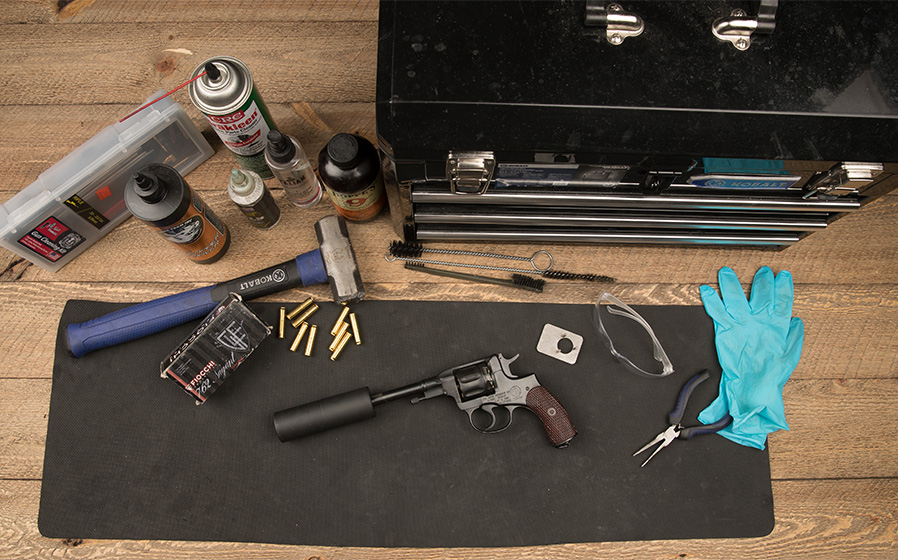
This week we discuss the only easily suppressable revolver in existence that we are aware of the Nagant M1895. In general, revolvers aren’t compatible with silencers because too much gas escapes at the junction between the cylinder and the barrel. Non-gas seal revolvers have a small gap (known as a flash gap) between the cylinder and the barrel. This small gap is necessary to allow the revolver’s cylinder to revolve, presenting a new, loaded chamber for firing. This means that the bullet will jump the gap when fired, which may have an adverse effect on accuracy, especially if the barrel and chamber are misaligned, and also presents a path for the escape of high-pressure and high-temperature gases from behind the bullet. Revolvers can be hand fitted to reduce this gap, but most mass produced revolvers have a gap as large as 0.25 mm.
The Nagant M1895 features an unusual gas-seal system, in which the cylinder moves forward when the gun is cocked, to close the gap between the cylinder and the barrel. In addition, the unique 7.62x38R cartridge features a projectile that is deeply seated, entirely within the cartridge case, and the case is slightly reduced in diameter at its mouth. The barrel features a short conical section at its rear. This accepts the mouth of the cartridge, completing the gas seal. By sealing the gap, the velocity of the bullet is increased by 50 to 150 ft/s.
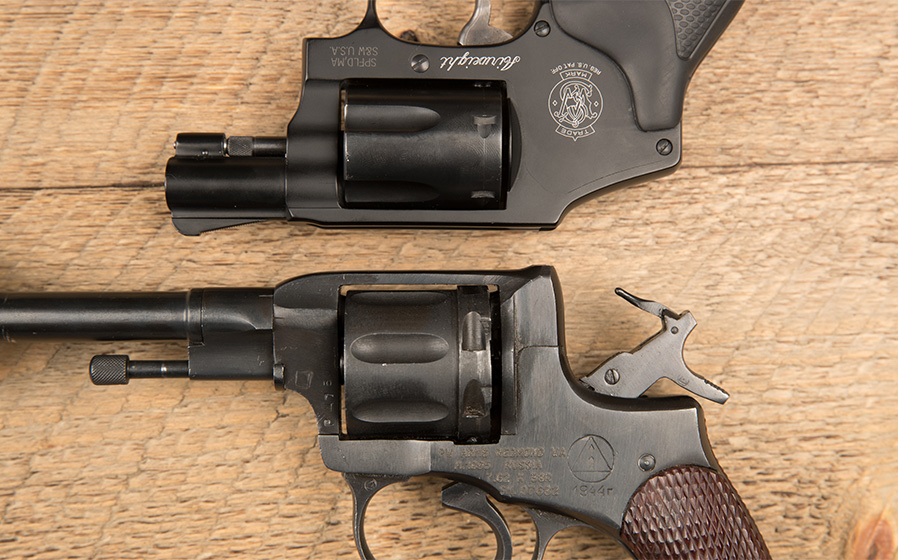
The M1895 was adopted as the standard issue sidearm for the Imperial Russian Army and police officers in the late 1890s, where it replaced earlier Smith & Wesson models. Up until 1918 there were two versions being manufactured. A double action, known as officer’s model and a cheaper single action known as Private’s Model Production of the single-action model seems to have stopped after 1918, with some exceptions made for target competitions. Most single-action revolvers were later converted to double-action, making original single-action revolvers rather rare. It continued to be used after the Russian Revolution (1917) by the Red Army and the Soviet Security Forces. Perhaps the most famous use of the Nagant revolver was by communist revolutionaries to murder the Russian imperial family and their servants in July 1918.
During World War II, a small number of Nagant revolvers used by Russian recon and scout troops were outfitted with a variety of sound suppressor known as the Bramit Device. When equipped with this device, the Nagant fired special cartridges that contained a sabot .22 bullet. After firing, the Bramit Device, which was mounted on the muzzle, would catch the sabot and prevent the gases from exiting quickly, further reducing noise.
The Cheka, NKVD and KGB were known to use the silenced Nagant for clandestine operations. Silenced Nagant revolvers, modified in metal shops, also turned up in the hands of Viet Cong guerrillas during the Vietnam War.
Aftermarket cylinders for .32 can be installed, allowing them to safely fire .32 H&R or .32 ACP. Gas seal will not function with this ammo. Proper fitting ammunition can be reloaded from .32-20 Winchester brass by using the Lee Nagant die set. However, The gas seal that made the Nagant famous will not fully function due to the .32-20 not being long enough to protrude past the cylinder like the original Nagant ammo.
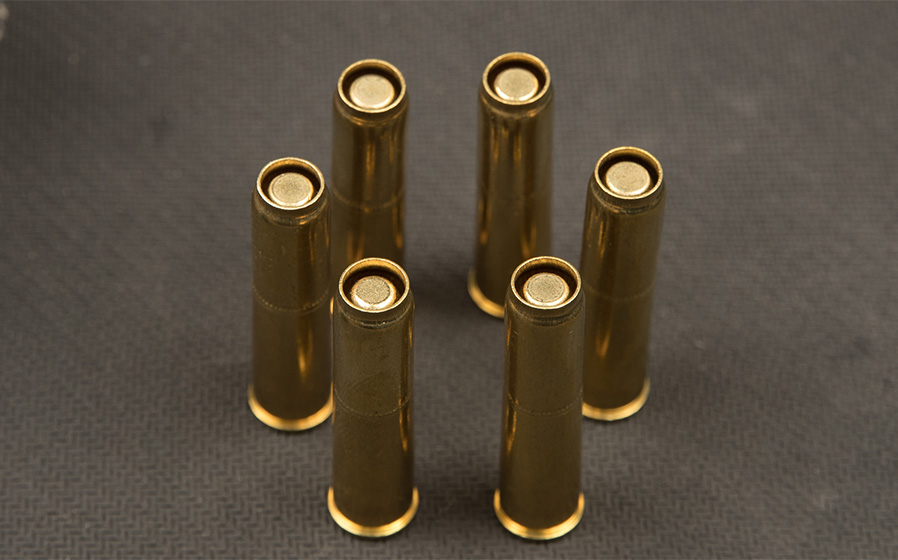
Things We Like
In Russian service, it was known for its extreme sturdiness and ability to withstand abuse. As one former Imperial Russian officer stated, if anything went wrong with the M1895, you could fix it with a hammer.
The Nagant also does not include a fixed ejector to knock the fired cases out of the cylinder. Instead you use the same rod that locks the cylinder in place inside the frame. This rod will pivot and double as the ejector rod. This saves space, cost, and production time.
Revolvers in general have two advantages over semi-autos.
They are more reliable than semi-autos in that they don’t have failures to feed, failures to eject, magazine related issues, etc and when they do have a misfire (a cartridge wherethe primer is struck and fails to fire), the shooter can just pull the trigger again and engage the next round.
They don’t eject brass everywhere.
Things We Don’t Like
The 7.62x38R cartridge is 34% smaller in terms of mass than either a 9mm or .357 magnum round. It travels 13% slower than a 9mm and around 50% slower than a .357 magnum.
The Nagant 1895 are slow to reload because the top does not break open nor does the cylinder swing out of the frame, with the need to manually eject each of the used cartridges, and reload one cartridge at a time through a loading gate.
Heavier than expected trigger pull for a double action revolver.
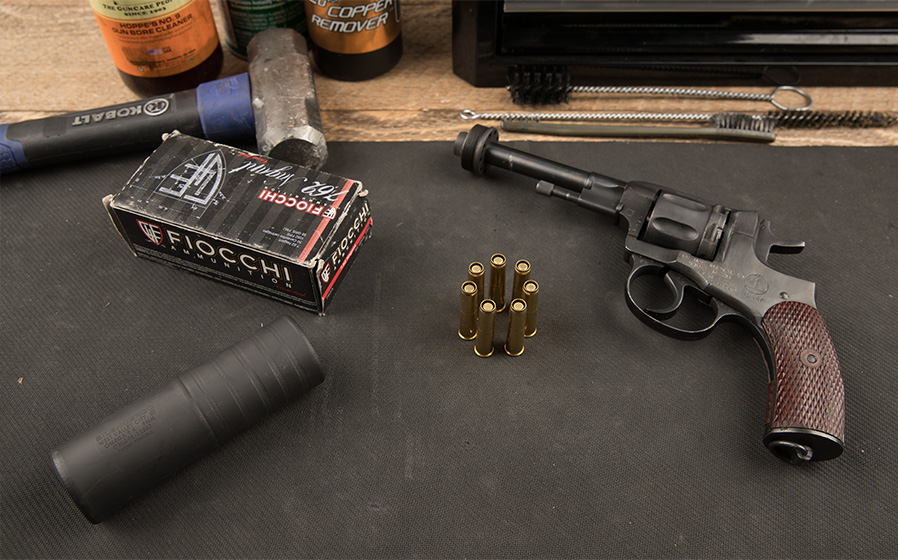
Bottom line
Sure, we all get a kick out of saying You can’t silencer a revolver.except this one, but this piece of history has a special place in our hearts and at our live fire events because of its design characteristics that make silencing easy, portability, and overall uniqueness. We just don’t want to get in a firefight with one.



